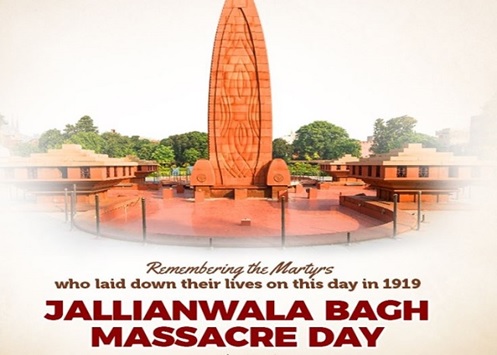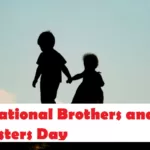The Amritsar Massacre, commonly remembered as the Jallianwala Bagh Massacre, occurred on April 13, 1919, in Amritsar. It was a bloody event. Protesters crowded in Jallianwala Bagh to call for the liberation of Indian politicians Dr Saifuddin Kitchulu and Dr Satyapaul, who had been imprisoned. Baisakhi, the Sikhs’ greatest significant holiday, was attended by a large number of pilgrims from throughout the world.
Baisakhi is a harvesting major festival by the Sikhs and celebrates the commencement of Khalsa Srijan Divas, which honors the creation of Khalsa during the year 1699. British forces opened fire on the massive defenseless gathering, slaughtering possibly hundred people. Several individuals from all around came to commemorate this important day, but it ended out to be a funeral instead.
Jallianwala Bagh Massacre Day History
All across the nation, particularly in the states of West Bengal and Punjab, there had been growing discontent and instability since the start of World War I. There were a lot of factors that helped unite the population against British rule: inflation and excessive taxes, as well as a large number of dead and injured troops. It was in 1919 that the Rowlett Committee was formed as a result of the escalating civil disturbance.
Legally, the Rowlett Act enabled some political matters to be handled without a jury and authorized the detention of individuals without any investigation. Mahatma Gandhi rose to prominence as a nationalist during this period. Protests over the law erupted across the nation. Punjab saw the worst of the rioting. There were protests outside the Amritsar Deputy Commissioner’s house calling for the release of Satya Pal and Saifuddin Kitchlew, both prominent members of the Indian Freedom Struggle.
Violent demonstrations resulted in the destruction of the Town Hall and the railway station, as well as the interruption of telegraph system and telecommunication. Several European civil servants and individuals were killed as a consequence of the conflict. The city of Amritsar was silent for a few days as a result of all of these events, while other areas of Punjab were affected. In response, the British government declared martial law in the vast majority of Punjab. Civil freedoms were curtailed by prohibiting both public meetings and the assembly of larger groups of persons.

Deaths
Until today, the exact number of people killed as a result of the shooting has been a matter of debate. Although the official British investigation revealed 379 dead, Congress estimated the actual body count at around 1,000. The well also contained the remains of roughly 120 people who had perished. The Jallianwala Bagh Trust was established in 1920 to erect a memorial monument at the site of the massacre in Jallianwala Bagh.
Benjamin Polk, an English designer, designed the monument, which was dedicated by Rajendra Prasad, India’s former president, on April 13, 1961. It’s hard to look at the memorial without thinking about the individuals who lost their lives that day, and that’s why there are bullet holes in the walls. Additionally, a well that was used to save many individuals from being shot by the military has been kept on the park’s grounds.
Jallianwala Bagh Massacre Day: Hunter Commission
At a meeting on October 14th, 1919, Indian officials formed a group named the Disorders Inquiry Commission to examine what happened. When the committee’s name was changed, it was referred to as the Hunter Commission. William Lord Hunter was the commission’s chairperson. Dyer was not disciplined by the Commission, but he was compelled to retire from the service. Mahatma Gandhi started organizing non-violent protests of non-cooperation in the 1920s.
Post Massacre
The Indians were infuriated by this. After abandoning their earlier allegiance to British rule, numerous Indians took up the cause of independence. Throughout Punjab, a state of emergency was declared. As a result of his efforts, General Dyer was hailed as a hero by several democrats in the House of Lords. When the House of Representatives rebuked him for misconduct in July 1920, he was widely derided.
The army never brought Dyer in front of a court-martial, and his sole penalty was to be pulled from his present position, denied a promotion, and forbidden from future work in India. Dyer subsequently withdrew from the military and perished in 1927, unrepentant and unapologetically committing acts of war. Whereas the poet Rabindranath Tagore as well as other National dignitaries was shocked by the episode, it was widely denounced.
The massacre prompted a reassessment of the British Army’s military involvement in civilian affairs, with a focus on minimizing the use of violence when necessary. In addition, the broader Indian populace has lost a great deal of trust in the British government’s objectives. Non-Cooperation Movement speculations and consciousness were propagated by Jallianwala Bagh Massacre, which took place in 1920-22. During 2019, the British government acknowledged “disappointment” for the Jallianwala Bagh Massacre, which has never publicly apologized for.










